Diversity divides. Unity unites.
A series, written together, on ethnic unity in The Church
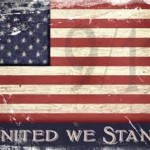 Immediately after 9-11, a great political cartoon appeared on opinion pages around the U.S. On September 10th we are hyphenated Americans—African-American, Euro-American, Asian-American, Hispanic-American; in the second cartoon frame, after September 11th, all the hyphenations were dropped. After 9-11 we were just supposed to be referred to as “Americans.” “United We Stand” bumper stickers were everywhere.
Immediately after 9-11, a great political cartoon appeared on opinion pages around the U.S. On September 10th we are hyphenated Americans—African-American, Euro-American, Asian-American, Hispanic-American; in the second cartoon frame, after September 11th, all the hyphenations were dropped. After 9-11 we were just supposed to be referred to as “Americans.” “United We Stand” bumper stickers were everywhere.
Jesus, in his high priestly prayer from John 17, was most concerned that believers would maintain a disciplined unity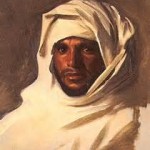 of belief. Four times our Lord prays that His body would be “one” (John 17:10, 21-23). Doctrinal solidarity with other Christians is paramount in the early Church mission statement of Acts 2:42-47. Christian communities were marked by repetitious words like “one,” “body,” “others,” “one another,” and “members” such as is found in Romans 12:3-10. The English word itself makes the point: there is no community without unity. The passage which first comes to my mind when I think of unity is Ephesians 4:1-6. [Dr. Mark Eckel]
of belief. Four times our Lord prays that His body would be “one” (John 17:10, 21-23). Doctrinal solidarity with other Christians is paramount in the early Church mission statement of Acts 2:42-47. Christian communities were marked by repetitious words like “one,” “body,” “others,” “one another,” and “members” such as is found in Romans 12:3-10. The English word itself makes the point: there is no community without unity. The passage which first comes to my mind when I think of unity is Ephesians 4:1-6. [Dr. Mark Eckel]
[Pastor Brian Green]
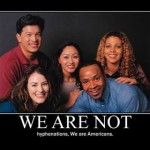 What is interesting about the cartoon that appeared on the opinion pages around the U.S. following that horrific day in 2001 is that it exposes the disunity that still plagues the United States, its culture, and subcultures. In the cartoon we notice the dis- of disunity in that the word “American” is preceded by an ethnicity as the prefix. This prefix is intentional, defining a person’s heritage. The cartoon’s hyphenation should be worthless if countrymen are united against their attackers.
What is interesting about the cartoon that appeared on the opinion pages around the U.S. following that horrific day in 2001 is that it exposes the disunity that still plagues the United States, its culture, and subcultures. In the cartoon we notice the dis- of disunity in that the word “American” is preceded by an ethnicity as the prefix. This prefix is intentional, defining a person’s heritage. The cartoon’s hyphenation should be worthless if countrymen are united against their attackers.
In that declaration of war on the United States the dis-unified Americans found a “unity of Spirit” and a “bond of peace” (Eph 4:3). The desire for unity, or Oneness, is often talked about on several different platforms, whether that be political, social, or religious. The manifestation of Oneness becomes visible when a common unity is realized.
(Eph 4:3). The desire for unity, or Oneness, is often talked about on several different platforms, whether that be political, social, or religious. The manifestation of Oneness becomes visible when a common unity is realized.
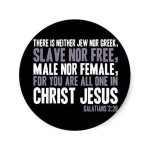 Jesus, in his high priestly prayer from John 17, identifies the common unity for believers. The unity of belief. Unfortunately, like the cartoon depicted, and like Americans on September 10, 2001, the Church of Jesus Christ is separated by hyphenated groups. We are not just believers and followers of Jesus Christ. We are Baptist-Christian, Pentecostal-Christian, Presbyterian-Christian, Lutheran-Christian. If that is not enough we will mix genealogical and cultural heritage with our positional inheritance we have in Christ such as African Methodist Episcopalian-Christian or Korean Presbyterian-Christian.
Jesus, in his high priestly prayer from John 17, identifies the common unity for believers. The unity of belief. Unfortunately, like the cartoon depicted, and like Americans on September 10, 2001, the Church of Jesus Christ is separated by hyphenated groups. We are not just believers and followers of Jesus Christ. We are Baptist-Christian, Pentecostal-Christian, Presbyterian-Christian, Lutheran-Christian. If that is not enough we will mix genealogical and cultural heritage with our positional inheritance we have in Christ such as African Methodist Episcopalian-Christian or Korean Presbyterian-Christian.
Does this reflect the “oneness” to which Jesus calls all Christians? Does this reflect a necessary unity? Certainly “oneness” 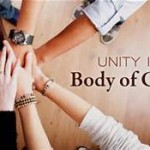 does not mean “sameness” in sense that there is an absence of difference in all things. However, we must understand that our Lord is intentional in his prayer in the upper room regarding our need to be “one.” Oneness ideology travels throughout the Scriptures. We live in a world of disharmony and division. People look for a group with a common purpose and cooperative spirit.
does not mean “sameness” in sense that there is an absence of difference in all things. However, we must understand that our Lord is intentional in his prayer in the upper room regarding our need to be “one.” Oneness ideology travels throughout the Scriptures. We live in a world of disharmony and division. People look for a group with a common purpose and cooperative spirit.
Diversity divides. But in Christ, we are all one.
Pastor Brian Green took the class “Theological Foundations of Ministry” from Dr. Mark Eckel; they have been friends ever since. Brian blogs at cellsoflife.org and his teaching can be seen at https://www.youtube.com/user/CellsOfLife. Mark is Professor of Leadership, Education & Discipleship at Capital Seminary & Graduate School. “Oneness” is a series of essays which focus on ethnic unity in The Church.

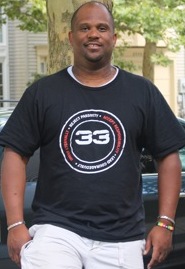

I hate it when people make me compare my actions to Jesus. I know He wants one body, one church, one baptism, but I like being and acknowledging my African heritage. Having grown up, been educated, and worked in environments where I was the only person of color in class and in the office, I look to my church as the one place I can go and be surrounded by my own people. As long as my pastor comes straight from the Word of God and he does, I have no quarrel with the fact that we only have one other race member. But now that you’ve made me feel badly about that, I will give some thought to being Christ-like even on Sunday mornings at 11:00 AM. I don’t know that segregated in worship necessarily means segregated in spirit. But you are the expert. You tell me.
This is such an important issue in the church today. I have been reading The Heavenly Man, a book about a Chinese house church pastor, Brother Yun. In one section,Brother Yun talks about how the Western denominations inadvertently caused division amongst the Chinese house churches. He then goes on to share about his vision from the Lord for unity between the house churches of China, something that succeeded after years of prayer, fasting and tireless effort. It has made a difference in China’s evangelistic growth. Imagine what it could do here in the U.S., a unified mission to spread the Gospel. However, it all starts with how we choose to look at things, where we choose to draw dividing lines. And although lines may not be ideal for drawing oneness, there are some doctrinal lines that must be drawn, are there not? Mormonism? Abortion? Homosexuality? Clearly in defiance of God’s Word, yet there are many denominations that allow and embrace such doctrines. In practicality I see a speed bump, but in ideology I am all for oneness.